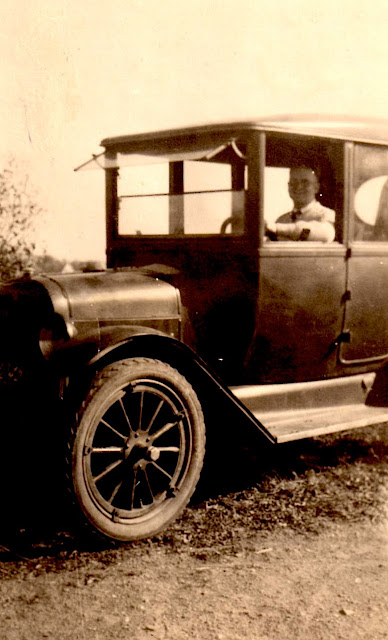Saturdays often allow a more leisurely approach to life than work days. I can more easily post links to some blog posts or other materials I have discovered during the week, or even to those discovered during a Saturday morning coffee and extended surfing of the blogosphere/internet.
Here are a few discoveries that I recommend for inclusion on your reading list.
1. Bill West announced in his August 20th post at West in New England, his 5th annual "Great Genealogy Poetry Challenge" is now underway with plenty of lead time before the November 20th submission deadline. Discover (or even write yourself) and then share on your blog those genealogy-related poems that have meaning to you, but be sure to get the post link to Bill by November 20th!
2. Barbara at Life From The Roots took a hiatus this summer and we are all beneficiaries of the photographs she took during her travels. I suggest you visit Barbara's blog and have a look. I especially like the photos of the Watertown Free Public Library posted August 28th. What a treasure that library is!
3. If you are a user of Facebook, you absolutely must read Judy Russell's post yesterday at The Legal Genealogist about proposed new changes in Facebook's TOS ("Terms of Service) relating to how they can use your name, profile picture, content and information "in connection with commercial, sponsored, or related content (such as a brand you like) served or enhanced by [Facebook]." [I am seriously contemplating removing myself from Facebook because I am increasingly less sure that (for me at least) the benefits outweigh the potential harm.]
4. Providing fresh evidence that I am still a newbie to blogging and public writing in general, I just became aware of the existence of an annual "Excellence-in-Writing" competition and award program by the International Society of Family History Writers and Editors (ISFHWE) -- an organization I was also not familiar with until now. The 2013 winners and Honorable Mentions in five categories have just been announced and you can see the list at UpFront With NGS. You will also be able to see the details for the 2014 competition, which will open on October 1, 2013, at the ISFHWE website here.
5. If you think that the last tintype photographs of Americans in combat took place during the Civil War by the likes of Mathew Brady, then you should have a look at the video here.
4. Providing fresh evidence that I am still a newbie to blogging and public writing in general, I just became aware of the existence of an annual "Excellence-in-Writing" competition and award program by the International Society of Family History Writers and Editors (ISFHWE) -- an organization I was also not familiar with until now. The 2013 winners and Honorable Mentions in five categories have just been announced and you can see the list at UpFront With NGS. You will also be able to see the details for the 2014 competition, which will open on October 1, 2013, at the ISFHWE website here.
5. If you think that the last tintype photographs of Americans in combat took place during the Civil War by the likes of Mathew Brady, then you should have a look at the video here.
6. In late May, Diane MacLean Boumenot at One Rhode Island Family highlighted and recommended four books and a magazine for our edification and reading pleasure. Among the books was one by a favorite history writer of mine -- John M. Barry, author of The Great Influenza and Rising Tide: The Great Mississippi Flood of 1927. The John Barry book recommended by Diane was Roger Williams and The Creation of the American Soul: Church, State and the Birth of Liberty. Since I was born in Rhode Island, have a deep interest in the church/state issue, and really like John Barry's writing, I immediately added this book to my summer reading list. I finished the book a few weeks ago during our Adirondacks vacation and I now want to add my enthusiastic support and recommendation to that of Diane. Anyone with an interest in early colonial history (especially that of Rhode Island and Massachusetts) and the issue of religious freedom in the context of separation of church and state in America, should really read this book!
_ _ _ _ _ _ _ _ _ _ _ _ _ _ _
Copyright 2013, John D. Tew
_ _ _ _ _ _ _ _ _ _ _ _ _ _ _
.jpg)





.png)
.jpg)

.png)



.jpg)


.png)